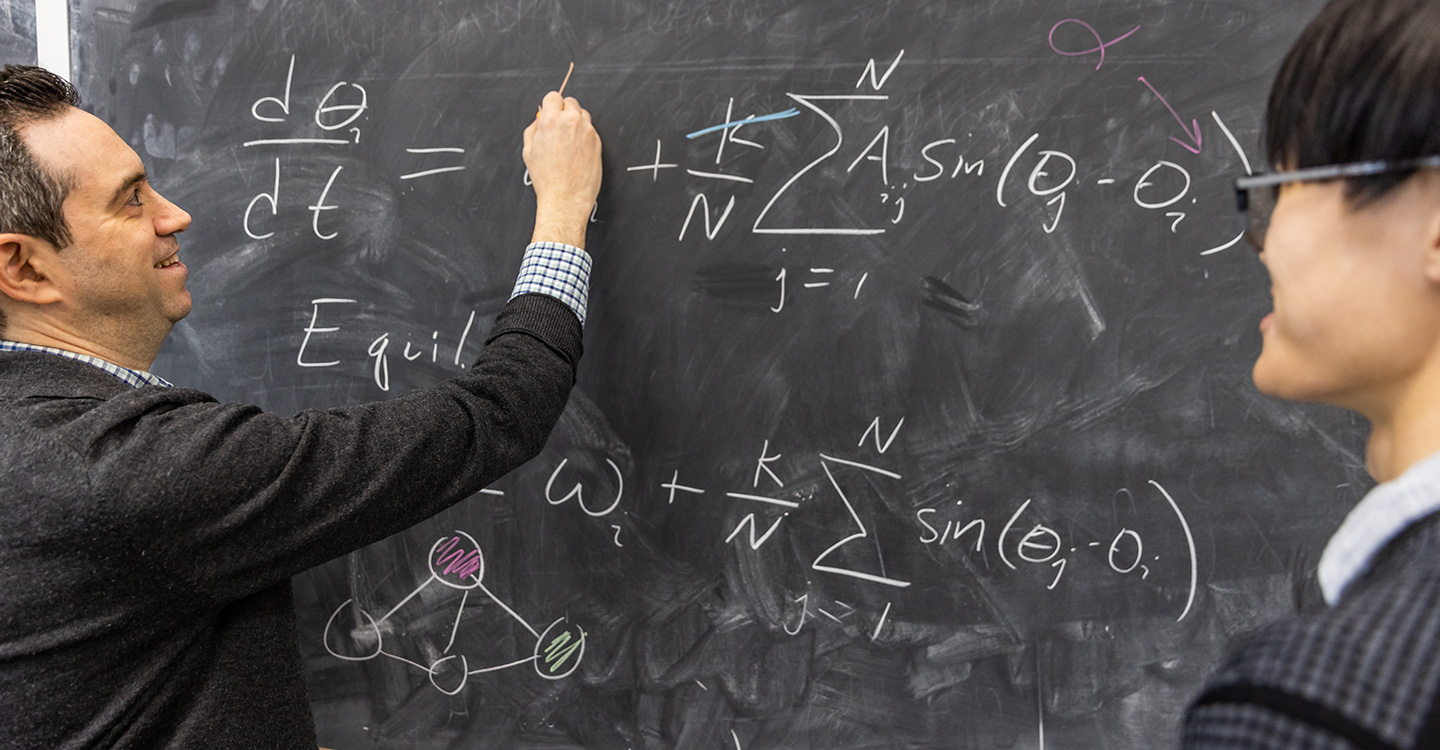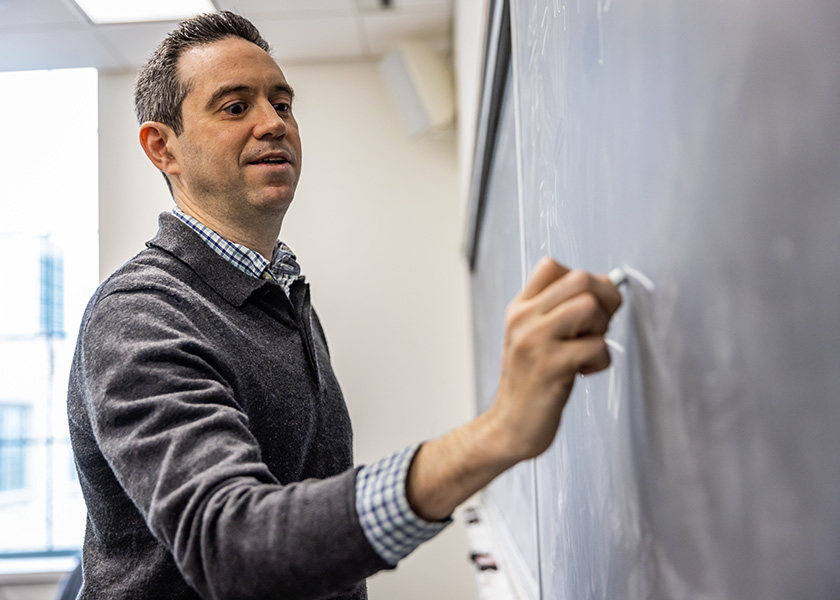Curiosities of the World
Daniel Abrams uses applied mathematics to investigate a diverse array of intriguing topics

Ask Northwestern Engineering’s Daniel Abrams to explain his research and he responds with a slight chuckle. After all, it can be tough for Abrams, professor of engineering sciences and applied mathematics, to characterize his scholarship in a single pithy reply.
Over recent years, Abrams has explored topics ranging from the usefulness of scientific conferences to the origins of left-handedness, from the evolution of egg and sperm cell sizes due to competition to the effects of societal influence on political elections. The one universal thread running through every project: Abrams’s use of mathematical tools to deliver understanding of the natural world and human behavior.
“I’ve always been interested in complex systems and areas in which the whole is greater than the sum of its parts,” said Abrams, a McCormick School of Engineering faculty member since 2009.
Abrams’s work falls into two broad categories: mathematical models of social systems, such as the aforementioned work on left-handedness, sperm cell sizes, scientific conferences, and coupled oscillation, which examines how synchronization is either engineered or operates naturally in the world.
The wide-ranging topics emerge from a mix of Abrams’s own personal intrigue – his work on left-handedness, for instance, sprouted from the dominant dexterity of his father and wife – as well as his students’ fascination with particular topics such as politics or animal behavior.
“The ideas really multiply over the years and I enjoy discovery and learning something new,” Abrams said. “Each project has its own story.”

Even if the topics vary widely, the math is not so different from one project to the next. Abrams starts with a simple mathematical model, using a data set to test the model and run simulations. Then, he devises parallel models and allows the data to select which model is best supported.
“If all goes as planned, it’s a virtuous cycle,” Abrams said.
By making qualitative theory quantitative, Abrams’s work often generates new insights into well-established theories and untangles mysteries.
Consider Zahavi’s handicap principle. First posited in 1975, the principle suggests that some biological mechanisms to attract mates – namely, ornamentation such as a deer’s antlers or a peacock’s bright feathers – are obvious handicaps for survival. Abrams and his team developed a mathematical model predicting that males evolve out of the tension between natural selection and sexual selection into two distinct subspecies – those with flashy ornaments for attracting mates and those with subdued ornaments.
Though elaborate ornamentation might seem to challenge survival, Abrams’s team showed that animals with extravagant ornaments nevertheless emerge more attractive to the opposite sex. In overcoming the “costs” of their ornamentation, they demonstrate their fitness and strength. None other than Charles Darwin himself, the father of evolutionary biology, wondered about ostentatious ornamentation threatening survival. The Abrams-led effort offered clarity as to why ornamentation matters.
“Ultimately, I hope to deliver understanding, which is always the key goal of science,” said Abrams, whose work also underscores applied mathematics’ far-reaching applicability. “Mathematicians don’t necessarily have to put themselves in any particular box. With the right tools, you can work on many areas.”
Mathematicians don’t necessarily have to put themselves in any particular box. With the right tools, you can work on many areas. Professor of Engineering Sciences and Applied Mathematics
In fact, Abrams, who became codirector of the Northwestern Institute on Complex Systems in February, considers the present “a golden age” for applied mathematicians given the vast emergence of new data as well as the continued digitization of old data. Specifically, he sees massive potential in the medical space, where predictive mathematical models can be used to understand disease progression, epidemics, and interventions.
“There are huge, amazing data sets with real, direct impacts to human health that are not being used to their full potential right now,” he said, pointing to privacy concerns as a sizable, though reasonable hurdle to applied mathematics’ advancement in the medical arena.
While Abrams will continue to review potential healthcare-related projects as they come his way, he said nature and society never cease providing unique curiosities. He cited two current projects as examples: one examining the origins of Saturn’s rings, and another exploring the synchronous flashing of fireflies in Thailand.
“I keep my options open,” Abrams said. “There’s no shortage of interesting questions and complex systems in our world.”